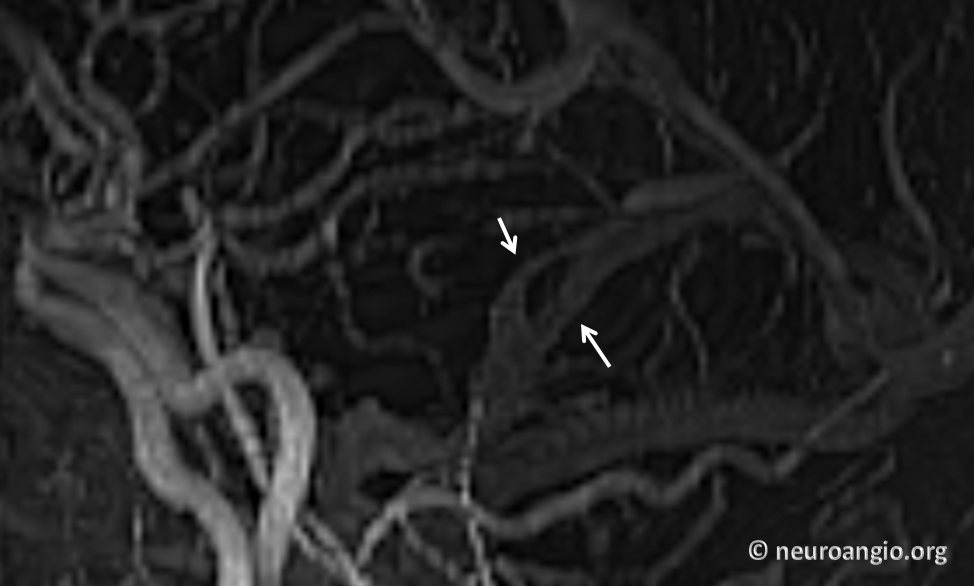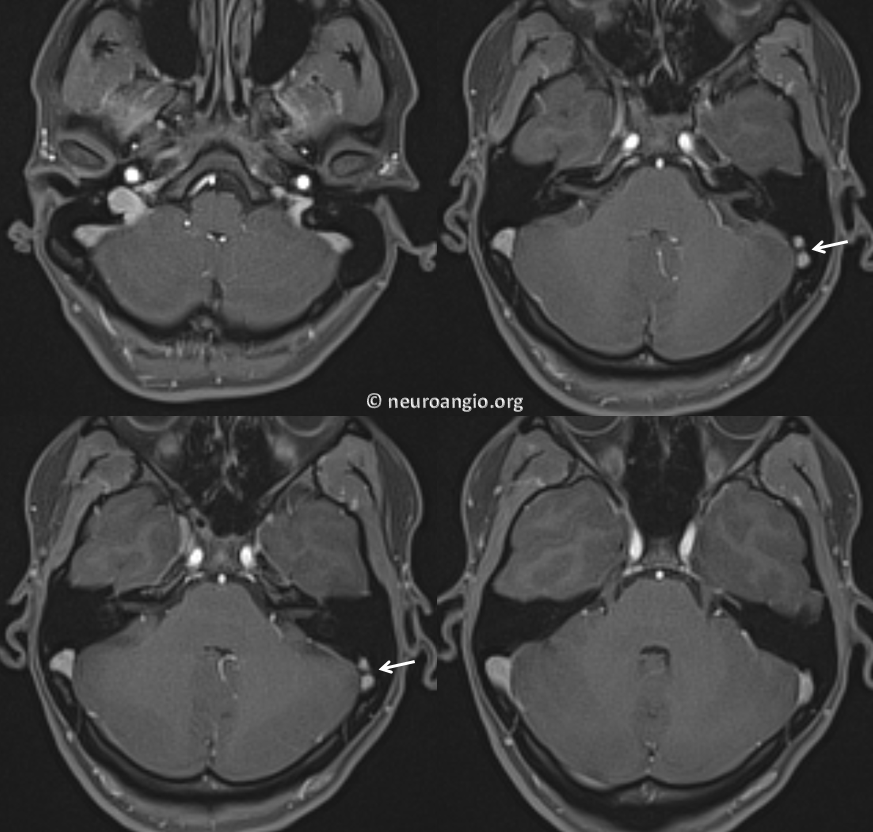Venous pulsatile tinnitus is one of the most common causes of this under-recognized disorder. The hallmark of venous tinnitus is the ability of patient to suppress the sound by ipsilateral jugular compression, which reduces flow in the entire ipsilateral transverse/sigmoid/jugular condiut. Even patients with large emissary veins are able to suppress the sound completely or nearly completely using this maneuver. Venous pulsatile tinnitus is most common on the side of the dominant sinus, which is why there are more people with right than left sided pulsatile tinnitus around. Venous stenosis is the most common cause of venous pulsatile tinnitus. Other causes such as dehiscent jugular wall, diverticula, high-riding bulb, and very rarely fenestrations have been described.
This patient presented with left-sided pulsatile tinnitus — the non-dominant sinus side. The sound can be predictably abolished by left lateral neck compression. A relatively rare sigmoid sinus fenestration was identified on MRI

Source images

Management has been conservative. See also Cerebral Venous Sinuses page of Venous Brain Anatomy section
